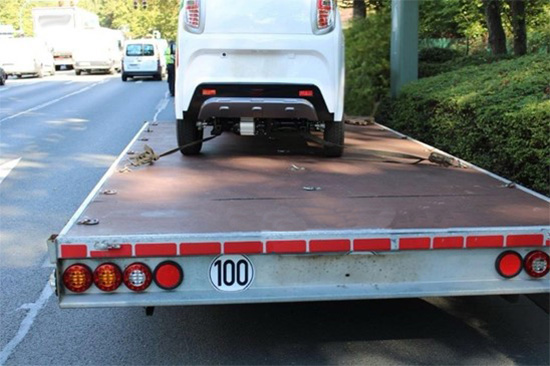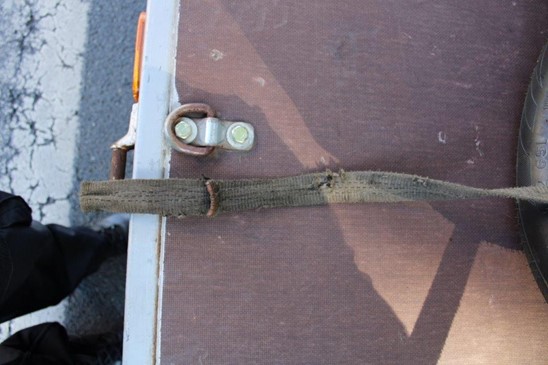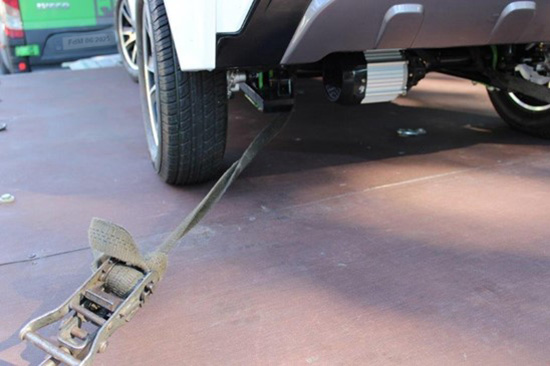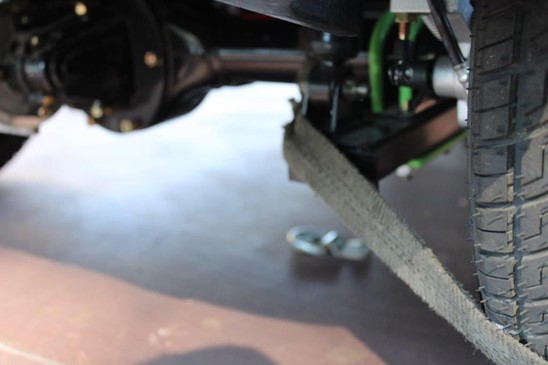| Photo of the month – June 2025 |
[German version] |
To produce its “Photo of the month” column, the GDV works together with the Königsberg load securing committee (KLSK e.V. – https://www.klsk.de/). The committee members are police officers who are specialized in inspecting and assessing load securing in road transport. They have first-hand experience of real-life interventions and regularly document serious shortcomings which they encounter in practice. These insights make it possible to gain a true-to-life picture of typical load securing errors and promote an understanding of the importance of correct load securing.
The “Photo of the month” for June 2025 presents some examples of the explanations the police are confronted with when speaking to drivers about their clearly inadequately secured loads:
Photo of the Month – June
“So what, it’s still there” – or: When improvisation and hope join forces
What sounds like the title of a bad DIY tutorial was, unfortunately, a sad reality on one city street:

Figure 1 – General view of the vehicle [Dirk Drepper]
This month’s photo clearly shows what happens when load securing is thought of as an onerous duty rather than a safety-enhancing imperative.
Our colleagues in the inspection unit stared open-mouthed with amazement when they became aware of a miniature electric vehicle (estimated weight: 350 kg) being transported on a trailer – or more accurately: seeking out its own place on the loading bed every time the driver braked.
Even from far off, the securing arrangements looked… how should we put it … dubious. When braking at traffic lights (approximately 40 km/h), the “little one” at the back began to weave around nervously on the trailer – a clear sign that the driver’s goodwill was no match for the laws of physics.
The “it’ll do” school of load securing
A subsequent inspection revealed the whole extent of the loader’s creative lashing technology:
- Two lashing belts – both of them fit for scrapping, torn and unlabeled – had been given the task of “restraining” the vehicle.

Figure 2 – Severely worn belt [Dirk Drepper] - The left-hand belt (seen in the direction of travel) had been artistically guided past the side of the axle mounting, twisted and fixed to the axle. The belt on the right had benefited from the same creative genius and was additionally weakened by a sharp edge.

Figure 3 – Belt path (left) Dirk Drepper]

Figure 4 – Sharp edges (right) {Dirk Drepper] - A third belt was fixed to the steering axle at the front – the driver removed this quickly before it could be photographed as evidence.
- All the trailer’s side gates had been dismounted – no one seemed to know exactly why. The lashing points? No one could be sure whether these were original or improvised. However, there had once been a label on the side gate… explained the driver.
The driver’s answer when asked what purpose this construction was supposed to fulfill was particularly charming:
“So what, it’s still there.”
A classic. Unfortunately, in practice, not at all appropriate.
Driver = Loader = Responsible
The consequences? That’s clear: Driver forbidden to continue the journey, impossible to make the load secure, need to call for a new means of transport. The driver was also reported – as he was also the loader, he bore full responsibility.
A sad ending to the story, because: Using four wheel loops at the available lashing points, the vehicle could have been secured without difficulty and in compliance with regulations. How long would that have taken? Barely five minutes. What effect would it have had? Incomparably better than “hope and prayer”.
![]()
Our tip for the month:
Load securing is not an art form – it is an obligation. Anyone who adopts an “it’ll do” approach is not only putting themselves at risk, but is also a danger to other road users. And above all: Anyone who dismounts side gates should at least know what a lashing point is – and how to use it.
